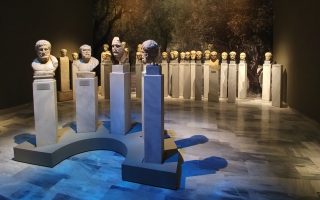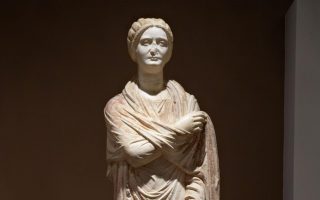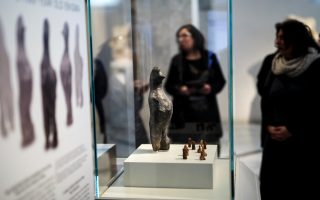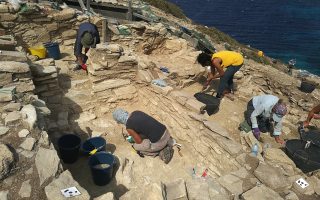The power of money, the money of power
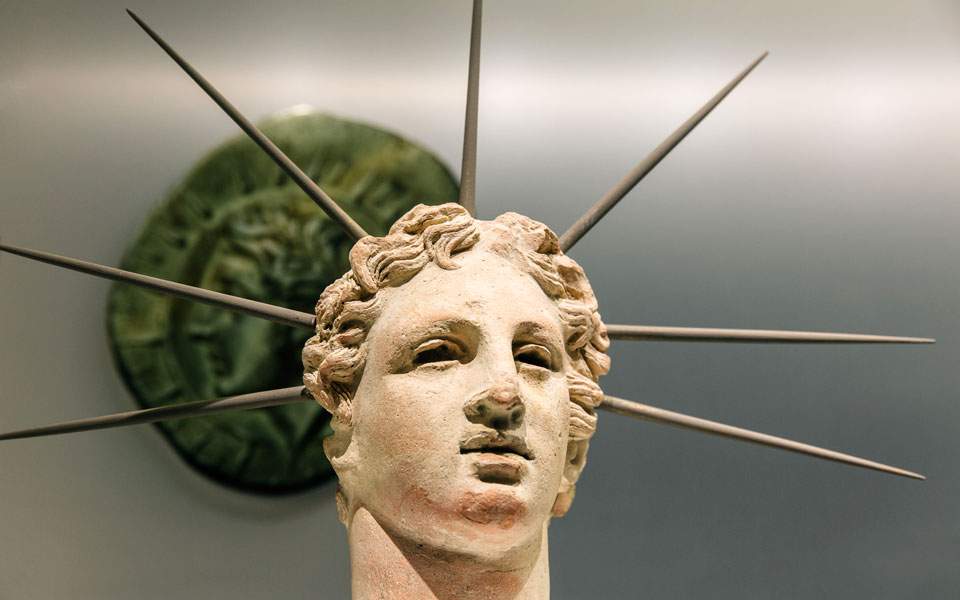
Back in 93-97 BC, the public treasury didn’t hire companies to chase up customers who were behind on their payments. They had a much simpler and effective method: a money collector armed with a wooden cudgel. On a tetradrachm struck in Macedonia at the time, the tools of the quaestors trade – the club and money chest – are seen on one side, with a portrait of Alexander the Great on the other. The coin is among the fascinating exhibits in “Money: Tangible Symbols in Ancient Greece,” currently on display at the Museum of Cycladic Art in Athens.
This fascinating exhibition has been put together by Professor Nicholas Stampolidis, the museum’s director, Dr Dimitra Tsangari, curator of Alpha Bank’s Numismatic Collection, and the museum’s archaeologist, Giorgos Tasoulas. It illustrates how most of the ancient Greek world’s hundreds of city-states had their own coinage systems, which meant that the marketplace (agora) in each had to have its own central clerk who was responsible for sorting out payments with money from other city-states. The table (trapezi) he sat at soon evolved into a bank (trapeza). A drawing by Yiannis Nakas in the exhibition shows us what a bank looked like in the second century BC: We see a customer carrying a small purse, a banker, a scale to measure the weight of coins and a Lydian stone to check their authenticity.
The exhibition comprises 85 pieces that come mainly from the Alpha Bank collection (one of the most noteworthy of its kind in the world) and 159 other objects from 32 museums in Greece, Italy, France and the UK. It is arranged in chronological order, starting with exchanges made without proper currency, before moving on to history’s first coin – a tiny thing with nothing but a hammer seal on one side to show it had gone through inspection.
“Once it is circulated legally, it becomes currency,” says Tsangari. The earliest coins were made from electrum, a naturally occurring alloy of gold and silver found in great abundance in the Pactolus River, in present-day Turkey. “Some city-states continued to cut their early coins from electrum, until King Croesus of Lydia had the idea of circulating two different coins in two pure metals: gold and silver.”
Coins that were used in day-to-day transactions depicting various nature-inspired motifs are cleverly displayed beside other objects to provide the viewer with some kind of context: For example, a silver drachm from Epidaurus depicting a seated Asclepius is displayed beside a sculpture of the seated medicine-man dating to AD 150-200.
“After the section on the three all-human themes of love, health and death, the exhibition goes to a different level to explore inventions,” says Stampolidis.
Alexander the Great, for example, changed the Macedonian tetradrachm (4-drachma coin) so that it weighed 17 grams instead of the original 14 grams because he wanted it to be on an equal footing with the Athenian tetradrachm. Within a few years of his campaign in the East, Macedonian tetradrachms had flooded international markets.
Each city-state also had its favorite motifs used to signify its strengths: wheat in Thessaly, the olive on Lesvos, the pomegranate in Side. The custom of depicting products that brought in revenues continued in early Roman times, as seen by the crocodile on a denarius coin from Mauretania issued by Juba II.
Another highlight of the exhibition is a hologram of Varvakeion Athena, the original of which is on display at the National Archaeological Museum and is considered the most faithful reproduction of the gold and ivory statue of the goddess sculpted by Pheidias at the Parthenon. Beside it is a copper Roman coin depicting the Acropolis.
The rich and multilayered exhibition is accompanied by a bilingual catalogue in Greek and English.
“Money: Tangible Symbols in Ancient Greece” runs through April 15 at the Museum of Cycladic Art (4 Neofytou Douka, Kolonaki, www.cycladic.gr). Opening hours are Mondays, Wednesdays, Fridays & Saturdays 10 a.m. – 5 p.m., Thursdays 10 a.m. – 8 p.m., and Sundays 11 a.m. – 5 p.m.


